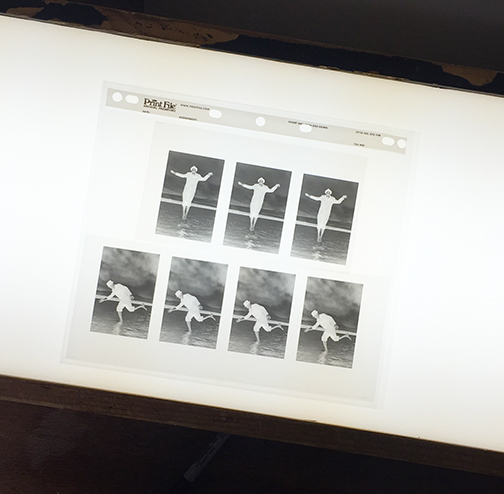When looking at digital papers, they always give you these terms and facts about the paper that sound like a whole bunch of jargon. We decided to make a little glossary of these terms to help you out when looking at different brands and paper types:
Just some of our many archival paper options
Acid free symbol
Acid Free: Acid will break down the chemical compounds within paper, resulting in the paper yellowing and becoming brittle. According to the Library of Congress, the more acid present in a paper the faster the aging process happens. This is why it is important to use Acid Free paper for any Fine Art printing, matting, and framing you choose to do.
Alpha Cellulose: Alpha cellulose is a major component of wood, plant and paper pulp. It is separated from the other components of the pulp that are undesirable in fine art papers. The pure white, alpha cellulose is insoluble and is filtered from the solution and washed prior to use in the production of paper. A high percent of alpha cellulose in paper will provide a stable, permanent material. Linen and cotton contain high proportions of alpha cellulose. Alpha cellulose can be isolated from a variety of plants. Manufactures do not usually state from where the alpha cellulose is sourced.
Barium Sulfate: Is the chemical name for “baryta.” A thin layer of barium sulfate is used to coat the paper base of many inkjet and darkroom papers. This coating leaves the paper surface smoother and more even, as well as having at brightening effect (due to barium sulfate’s high whiteness value). Barium Sulfate coated papers have a unique look and feel, which has been sought out by photographers worldwide.
Rag, Fibre/Fibre, Paper : Are terms that today are virtually interchangeable. At one time, rag meant cotton taken exclusively from cotton rag/cloth/towel remnants. Very few cotton papers are still made from rags. The difference between true rag papers and cotton papers made from linters is that the rags have the longer cotton fibers and the weaving seems to add strength. The symbol of quality is still a paper that is made from 100% cotton rags. That is probably why people prefer to call both cotton linter and cotton rag papers “rag.”
gsm or g/m2: Grams per Square Meter. Literally how many grams a 1-meter x 1-meter sheet of paper will measure in grams. A higher gsm paper will have a heavier and usually thicker feel. Due to difference in materials and manufacturing processes not all papers with the same gsm will have the same thickness.
OBA: Optical Brightening Agents, also known as 'optical brighteners' or UV brighteners, are white or colorless compounds that are added to the printing surfaces of many inkjet papers. Their purpose is to make the papers appear whiter and brighter than they actually are. They achieve this by absorbing ultraviolet (UV) radiation from the ambient lighting and re-emitting it through fluorescence, mainly in the blue portion of the visible spectrum. Consequently, they only work in lighting with a relatively high UV content, such as sunlight, fluorescent lights and halogen lamps. When not illuminated with a sufficient amount of UV light, the color of the paper will appear with its natural creamy or yellowish hue.
All UV brighteners are inherently unstable chemicals. In the process of fluorescence, the absorption of a photon triggers the emission of another photon with a longer wavelength. This transfer of energy comes at a cost: slow changes in the fluorescent chemicals. As these chemicals break down, their ability to fluoresce deteriorates until they will no longer do so. When this happens, the color of the paper will revert to its normal creamy or yellowish hue.
Giclée: Was adopted by Jack Duganne, a printmaker working at Nash Editions. He wanted a name for the new type of prints they were producing on the Iris printer, a large-format, high-resolution industrial prepress proofing inkjet printer they had adapted for fine-art printing. He was specifically looking for a word that would not have the negative connotations of "inkjet" or "computer generated". It is based on the French word gicleur, the French technical term for an inkjet nozzle. The French verb form gicler meant to spray, spout, or squirt. Duganne settled on the noun giclée, meaning "the thing that got sprayed.” (In other words, it’s a fancy way to say inkjet print.)








